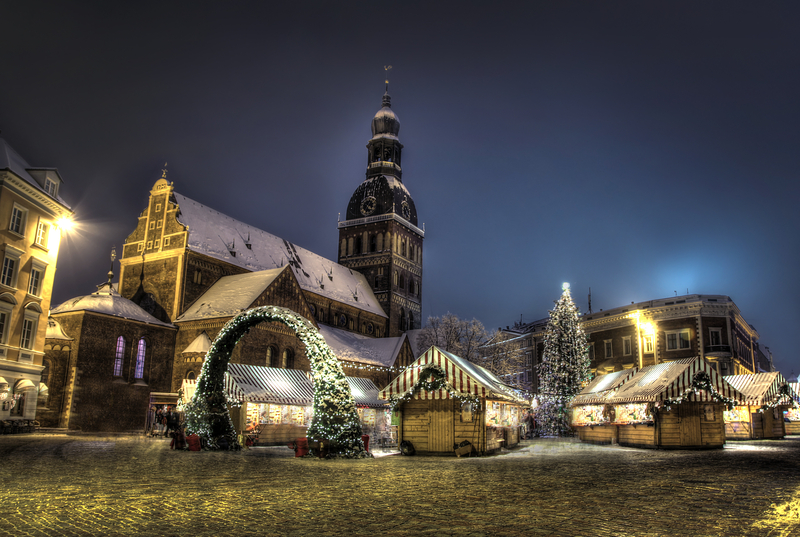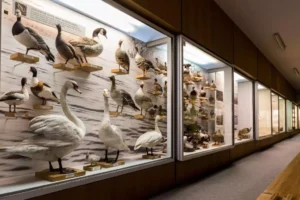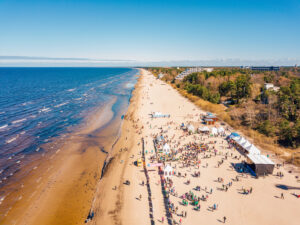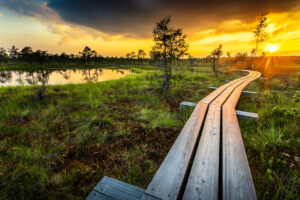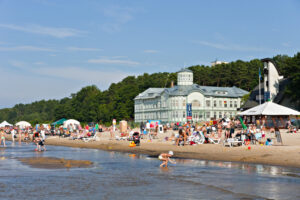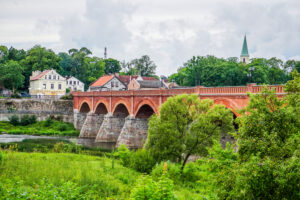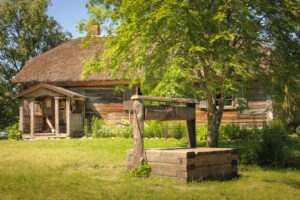Riga, the capital city of Latvia, is a place where history comes alive. With its well-preserved medieval architecture, cobblestone streets, and rich cultural heritage, Riga offers a unique glimpse into the past. In this blog post, we will take a deep dive into the city’s history, exploring its origins, its role in the Hanseatic League, and its turbulent past under various occupations.
Riga’s history dates back to the 12th century when it was founded by Bishop Albert of Livonia. The city quickly grew into a major trading hub due to its strategic location on the Baltic Sea. Riga became a member of the Hanseatic League, a powerful trading alliance of Northern European cities, in the 13th century. This membership brought wealth and prosperity to the city, leading to the construction of magnificent buildings and churches that still stand today.
One of the most iconic landmarks in Riga is the Riga Cathedral, also known as the Dome Cathedral. Built in the 13th century, it is the largest medieval church in the Baltic states. The cathedral’s impressive organ, with its 6,768 pipes, is one of the largest in the world. The cathedral has witnessed many significant events throughout history, including the coronation of several Latvian kings.
Another architectural gem in Riga is the House of the Blackheads. Originally built in the 14th century as a meeting place for unmarried merchants, it was destroyed during World War II and later rebuilt in the 1990s. The House of the Blackheads is a symbol of Riga’s resilience and determination to preserve its historical heritage.
Riga’s history took a dark turn in the 20th century when it fell under various occupations. During World War I, the city was occupied by German forces, and after the war, it became the capital of the newly independent Republic of Latvia. However, this independence was short-lived as Riga was occupied by the Soviet Union in 1940. The city suffered greatly under Soviet rule, with many historic buildings destroyed or neglected.
The most significant period of Riga’s history under occupation was during World War II when it was occupied by Nazi Germany. The Jewish population of Riga was subjected to mass killings and deportations to concentration camps. The Rumbula Forest massacre, where thousands of Jews were executed, stands as a haunting reminder of this dark chapter in Riga’s history.
After the war, Riga once again became part of the Soviet Union and remained under Soviet rule until Latvia regained its independence in 1991. The city underwent a period of restoration and revitalization, with many historic buildings being renovated and brought back to their former glory.
Today, Riga is a vibrant and cosmopolitan city that seamlessly blends its rich history with modernity. The Old Town, a UNESCO World Heritage site, is a maze of narrow streets lined with colorful buildings, charming cafes, and artisan shops. Strolling through the cobblestone streets, one can’t help but feel transported back in time.
In addition to its architectural wonders, Riga is also known for its cultural heritage. The Latvian National Opera, located in a stunning neo-classical building, offers world-class performances of opera and ballet. The Latvian National Museum of Art houses an impressive collection of Latvian and international art, showcasing the country’s artistic achievements throughout the centuries.
To truly immerse yourself in Riga’s history, a visit to the Museum of the Occupation of Latvia is a must. This museum provides a comprehensive overview of the city’s occupation periods, shedding light on the struggles and resilience of the Latvian people.
In conclusion, Riga is a city that proudly wears its history on its sleeve. From its medieval architecture to its tumultuous past under occupation, Riga offers a fascinating journey through time. Whether you are a history enthusiast or simply curious about the past, a visit to Riga will leave you with a deep appreciation for the city’s rich heritage.

